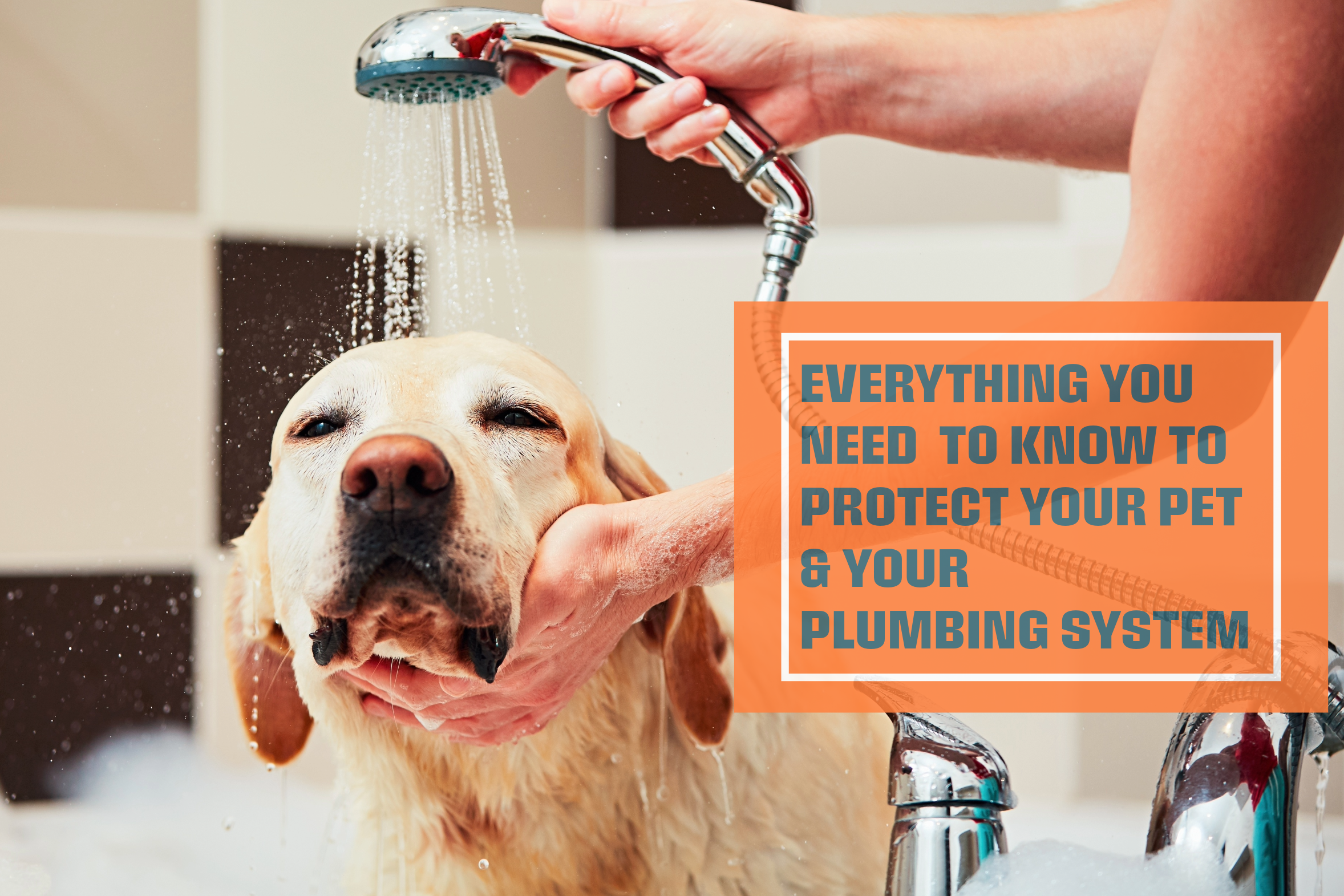Happy National Pet Month! As pet owners, of course, we cherish our pets. After all, they’re an integral part of our families. However, despite the joy they bring, pets can still require a substantial amount of care. It’s important to acknowledge with the presence of pets also comes a demand in regular home maintenance. One commonly overlooked aspect of pet care is their potential impact on our plumbing systems. Whether it’s pets drinking from toilets or those outdoor holes being dug, such activities can lead to significant, and sometimes expensive, plumbing problems – not to mention the safety aspect of it for your pet.
So, don’t wait. Join your preferred experts at Canal Winchester Plumbing & Drain as we discuss pet safety in relation to your plumbing system and how to protect It.
1. Pet Grooming
Regular grooming is essential for maintaining the cleanliness of your pets and home, as well as preventing parasite infestations such as ticks and fleas. Nonetheless, the grooming process can present distinct challenges to your plumbing system.
Bath Time: Bathing your pet at home is a practical approach to regularly managing odors and ensuring a healthy coat. Here are a few tips to aid in preventing plumbing issues during bathtime.
- Installing a hand-held showerhead can simplify the process of bathing your pet. Additionally, acquiring an outdoor pet bathtub is advisable for use during the warmer months is not a bad idea.
- Utilize a drain screen over your bathtub or shower drain to capture fur and prevent it from clogging your system. (These devices are also practical for regular every-day use.)
Brushing: Daily brushing can greatly decrease shedding and the accumulation of hair in your home, including the drains during bathtime. Try to select a brush that is appropriate for your pet’s hair type and to conduct the grooming outdoors when feasible.
- Consistent brushing decreases the volume of hair ingested by your pet during self-grooming, and also helps to reduce the risk of a clogged drain during bathtime.
- For pets with long hair, it is advisable to implement a bi-weekly brushing regimen if possible.
2. Pet Food & Pet Waste Disposal
Pet Food: It is important to note that dry pet food (kibble) should not be disposed of via the kitchen sink through the use of a garbage disposal unit. The reason for this is that dry pet food expands upon contact with water, potentially causing significant blockages within the plumbing system. Furthermore, should the wet food be allowed to dry, it will re-harden, exacerbating the issue. Instead, dispose of unwanted pet food in the trash receptacle.
Kitty Litter: Pet waste management is an integral aspect of pet ownership. The disposal method chosen can significantly affect your plumbing system. Contrary to common belief among many pet owners, flushing kitty litter down the toilet is not advisable. The majority of kitty litters are not designed to dissolve in water, which can result in blockages over time.
Even kitty litter marketed as “flushable” should not be disposed of via your toilet. Despite being made from biodegradable materials, flushable kitty litter decomposes over extended periods. Consequently, your plumbing may become obstructed with undissolved clumps of litter that have not broken down yet. Hence, we don’t believe that the convenience of flushing kitty litter does not justify the risks of potential damage to your system and the risk of causing significant plumbing issues in your home.
3. Pet Safety Tips
The Dangers of Digging: Pets, particularly dogs, often exhibit an instinctual behavior to dig. While this activity may seem benign when confined to the yard, it is important to consider the potential consequences of your pet digging in proximity to your home’s foundation or buried pipes. When this happens it can result in significant plumbing issues and may also pose a safety risk to your pet.
- Promote play in designated pet areas situated away from the house to reduce the risk of potential damage.
- Observe your pet’s behavior closely. Should you detect an increase in digging activities, it is advisable to consult with an animal trainer or a behavioral specialist to effectively address the issue.
The Dangers of Toilet Water: Observing a dog drinking from the toilet bowl is a common occurrence in many households. We know. We know. Although it’s a little gross, it happens! It’s not uncommon for pets to approach the toilet and consume water from it. Although this might not have previously raised concerns (apart from being unhygienic), this behavior can pose risks to your pet’s health. Products such as toilet tabs, bowl stamps, rim hangers, and chemical cleaners, all created to maintain the cleanliness and freshness of toilets, contain chemicals that might be harmful to your pet. Aim to keep the toilet lid closed and if you have a regular “Houdini” on your hands, consider the installation of a child-proof lock if necessary.
Caring for a pet includes numerous responsibilities, including home maintenance. Diligently considering the impact of your pets on the plumbing system and their safety can preempt costly repairs and mitigate stress. It is important to recognize that preventive measures significantly contribute to safeguarding both your pets and your plumbing infrastructure.
For additional guidance on home and plumbing maintenance, we invite you to explore our other blog posts. Should you have further inquiries or wish to arrange a consultation for a particular plumbing concern, please contact Canal Winchester Plumbing & Drain at (614) 490-7531 or schedule an appointment online now by clicking here!


